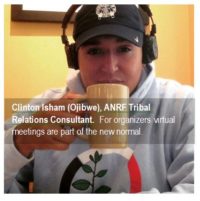THE NEW NORMAL
During these challenging times of working on smokefree air policies during a pandemic, local smokefree coalitions and teams are working in innovative ways to build support for strong smokefree air laws. If these past few months in social isolation have told us anything, it is that smokefree air policies are even more popular with the public than ever before and that promoting health and safety for workers is of primary concern. Here are some tips for creatively adapting your plans to successfully pass smokefree air laws and policies including lessons learned from working with Tribal Councils considering reopening their casinos smokefree, as well as the first completely virtual smokefree air campaign conducted in Shreveport, Louisiana.
REASSESS HOW LOCAL GOVERNMENT WORKS—AGAIN
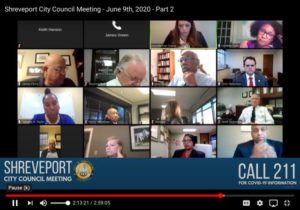 DO YOUR RESEARCH: Pre-pandemic procedures of meeting in person with city, county, or Tribal council members, talking one-on-one with the city attorney and manager, attending council meetings, and other aspects of policy advocacy and adoption have changed dramatically, and sometimes weekly. Some councils have eliminated their previously planned study sessions on secondhand smoke and other key issues and have shortened (or in some cases elongated) the time it takes to pass an ordinance or policy. Many jurisdictions have moved every interaction, including council meetings, to video conferencing. This is why it is important to first investigate how your government officials have adapted their requirements, schedules, and processes and then check in with city staff often to see if any new changes have been adopted. These steps will save your coalition and team a lot of headaches as you work toward your smokefree policies.
DO YOUR RESEARCH: Pre-pandemic procedures of meeting in person with city, county, or Tribal council members, talking one-on-one with the city attorney and manager, attending council meetings, and other aspects of policy advocacy and adoption have changed dramatically, and sometimes weekly. Some councils have eliminated their previously planned study sessions on secondhand smoke and other key issues and have shortened (or in some cases elongated) the time it takes to pass an ordinance or policy. Many jurisdictions have moved every interaction, including council meetings, to video conferencing. This is why it is important to first investigate how your government officials have adapted their requirements, schedules, and processes and then check in with city staff often to see if any new changes have been adopted. These steps will save your coalition and team a lot of headaches as you work toward your smokefree policies.
BE ADAPTABLE: Understanding the new processes was very important as Shreveport, Louisiana, fast-tracked a smokefree air ordinance for their community. Local health professionals and advocates had to stay flexible and proactive with each change in the process for strengthening ordinance language before it went to a vote of the council.
When communities in Alameda County, CA considered new tobacco control ordinances, coalition partner’s researched new city council procedures and then collaborated to host virtual meetings to educate community members and the coalition about how to participate in the virtual city council meetings, like how to provide public comment.
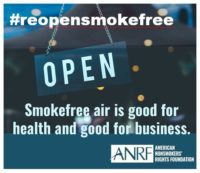 In Colorado, many local health professionals have had to quickly respond to efforts during the pandemic by the marijuana industry to weaken smokefree protections to allow marijuana/cannabis smoking indoors thereby potentially creating a new class of workers who would have to give up their health for a paycheck. Regional and statewide partners often jump on organizing calls to discuss the best way to educate local decision makers virtually about secondhand marijuana smoke and how to respond to misconceptions. Many partners have template letters ready to adapt and send to city council’s to show support for keeping smokefree laws strong. In an interesting twist, virtual council meetings are making it easier for national partners to provide testimony as subject matter experts on many tobacco-related issues. One more note on virtual council meetings: when the topic is potentially controversial, often pro-smoking devotees will post inflammatory statements in the chat box. Be sure not to engage with the pro-use contingent and instead, stick to the health message, research and facts.
In Colorado, many local health professionals have had to quickly respond to efforts during the pandemic by the marijuana industry to weaken smokefree protections to allow marijuana/cannabis smoking indoors thereby potentially creating a new class of workers who would have to give up their health for a paycheck. Regional and statewide partners often jump on organizing calls to discuss the best way to educate local decision makers virtually about secondhand marijuana smoke and how to respond to misconceptions. Many partners have template letters ready to adapt and send to city council’s to show support for keeping smokefree laws strong. In an interesting twist, virtual council meetings are making it easier for national partners to provide testimony as subject matter experts on many tobacco-related issues. One more note on virtual council meetings: when the topic is potentially controversial, often pro-smoking devotees will post inflammatory statements in the chat box. Be sure not to engage with the pro-use contingent and instead, stick to the health message, research and facts.
GO DIGITAL FOR YOUR MESSAGING
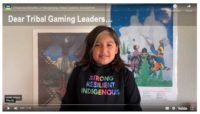 MINI-VIDEOS: Creating mini-videos featuring members of your community talking about why a smokefree policy should be adopted can be an innovative and accessible way to educate and motivate your local decision-makers. As a way to reach Tribal leadership in the contiguous U.S., ANR Foundation worked with Tribal partners to create short, accessible 2–3 minute mini-videos with a single theme, such as the health benefits of reopening Tribal casinos smokefree and the financial benefits of smokefree casinos.
MINI-VIDEOS: Creating mini-videos featuring members of your community talking about why a smokefree policy should be adopted can be an innovative and accessible way to educate and motivate your local decision-makers. As a way to reach Tribal leadership in the contiguous U.S., ANR Foundation worked with Tribal partners to create short, accessible 2–3 minute mini-videos with a single theme, such as the health benefits of reopening Tribal casinos smokefree and the financial benefits of smokefree casinos.
ANR Foundation staff then sent links to these videos to tribal leadership with an introduction, and to regional tribal health organizations for them to send personally to tribal councilmembers.
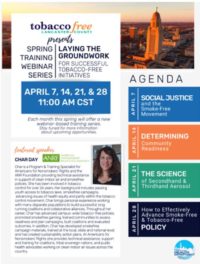 WEBINARS: Instead of traditionally meeting in-person for town hall meetings or workshops, consider organizing a webinar on key topics and inviting not only your coalition members but also political candidates, media representatives, workers, and residents including parents and families. Having an account with a webinar platform is a necessity these days, but you may have coalition partners who have an account that can be used to host webinars. Be sure to become familiar with the logistics of hosting a webinar, including security settings like locking your webinar preferences so only registered people can attend and limiting screen sharing to only presenters.
WEBINARS: Instead of traditionally meeting in-person for town hall meetings or workshops, consider organizing a webinar on key topics and inviting not only your coalition members but also political candidates, media representatives, workers, and residents including parents and families. Having an account with a webinar platform is a necessity these days, but you may have coalition partners who have an account that can be used to host webinars. Be sure to become familiar with the logistics of hosting a webinar, including security settings like locking your webinar preferences so only registered people can attend and limiting screen sharing to only presenters.
BUILD YOUR VOLUNTEER BASE AND COMMUNICATE OFTEN
VIRTUAL MEETINGS: Now that most people are practicing social distancing from home, it is vital to stay in touch with your volunteers and coalition members. This means connecting more often via regular virtual meetings (using platforms like Zoom) and conference calls with the goal of keeping these interactions upbeat, lively, and useful. Consider breakout groups during these meetings to work on aspects of action plans, strategy charts, and communication plans. Or hold a brainstorming session on creative ideas for engaging people to support smokefree in COVID-safe ways. Plan to revisit dealbreakers with every organization involved in education and organizing to be extra certain you are all in agreement moving forward. Some coalitions working on tobacco-free college campus policies are hosting virtual roundtable events to discuss all the elements needed for successfully adopting and implementing a policy.
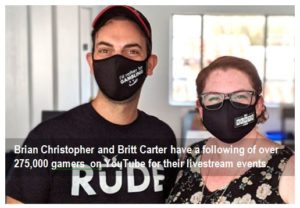 SOCIAL MEDIA: Many coalitions are utilizing social media more often to continually interact with supporters and to educate the public about the health effects of secondhand smoke exposure. One coalition worked with their high school Youth Leaders to create a social media campaign that highlights why individual Youth Leaders support tobacco control and a smokefree policy in their community. These days more people are scrolling through their social media and emails while working from or staying home so your social media messages have a greater chance of being seen and read.
SOCIAL MEDIA: Many coalitions are utilizing social media more often to continually interact with supporters and to educate the public about the health effects of secondhand smoke exposure. One coalition worked with their high school Youth Leaders to create a social media campaign that highlights why individual Youth Leaders support tobacco control and a smokefree policy in their community. These days more people are scrolling through their social media and emails while working from or staying home so your social media messages have a greater chance of being seen and read.
TRY UNCONVENTIONAL AND VIRTUAL ORGANIZING
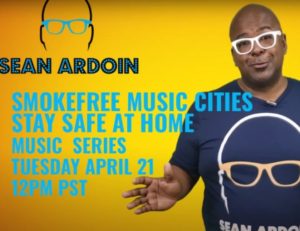 INFLUENCERS: Social media influencers are an increasingly important element of the modern smokefree air effort. Influencers can authentically speak and take your message to large groups of people via their own established social media platforms. This can help reach people outside public health whose feedback might be especially useful. For example, Brian Christopher and Britt Carter of BCSlots.com have been effectively sharing the smokefree casino message with their gaming enthusiast fans as part of their YouTube livestreams. See this example from the HardRock Tulsa. They also conducted a fan club survey in partnership with ANRF which found that even most smokers prefer smokefree casinos. This survey provided useful stats and commentary on the livestreams, generating thousands of comments.
INFLUENCERS: Social media influencers are an increasingly important element of the modern smokefree air effort. Influencers can authentically speak and take your message to large groups of people via their own established social media platforms. This can help reach people outside public health whose feedback might be especially useful. For example, Brian Christopher and Britt Carter of BCSlots.com have been effectively sharing the smokefree casino message with their gaming enthusiast fans as part of their YouTube livestreams. See this example from the HardRock Tulsa. They also conducted a fan club survey in partnership with ANRF which found that even most smokers prefer smokefree casinos. This survey provided useful stats and commentary on the livestreams, generating thousands of comments.
Musicians are also examples of social influencers who can reach people beyond usual public health networks. Creole Zydeco 2-time Grammy Nominee, Sean Ardoin, shares smokefree messages from a personal perspective. See the videos from Sean and other artists, all part of Smokefree Music Cities Stay Safe at Home Music Series.
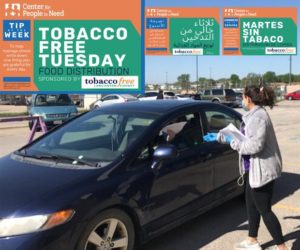 INCENTIVES: Small gifts or enticements are always a fun way to engage volunteers with the smokefree message, but how to do that virtually? Some groups in Alaska are offering incentives where community members get a “prize” for engaging. They have learned that it is important to build in a requirement that people engage back to get the “prize.” For example: if you submit photos of “thumbs up for smokefree” or “painted rocks for tobacco-free” to their social media, you will get a “sticker” or earphones in the mail. Working virtually in teams is another idea to increase the enthusiasm for engagement. It is important to make these virtual events as easy as possible for people to participate and be tailored to the audience. Other inspiring incentives coalition members received in Alaska recently include stress relieving “play dough” and coffee, tea, screen cleaner, agenda, bio, and welcome letter.
INCENTIVES: Small gifts or enticements are always a fun way to engage volunteers with the smokefree message, but how to do that virtually? Some groups in Alaska are offering incentives where community members get a “prize” for engaging. They have learned that it is important to build in a requirement that people engage back to get the “prize.” For example: if you submit photos of “thumbs up for smokefree” or “painted rocks for tobacco-free” to their social media, you will get a “sticker” or earphones in the mail. Working virtually in teams is another idea to increase the enthusiasm for engagement. It is important to make these virtual events as easy as possible for people to participate and be tailored to the audience. Other inspiring incentives coalition members received in Alaska recently include stress relieving “play dough” and coffee, tea, screen cleaner, agenda, bio, and welcome letter.
DRIVE THROUGHS: Tobacco control groups in Nebraska and Louisiana are partnering with local organizations to host drive-through health fairs or food drives in the parking lot of the organizations or local schools. Community members then drive through and pick up a bag with educational material and swag. Some coalitions are even handing 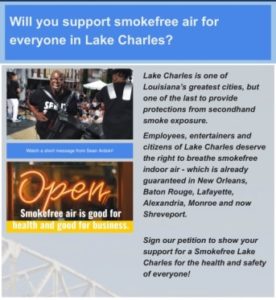 out masks as an incentive for signing a petition for a smokefree ordinance. Be sure to ask your local councils if electronic sign-on petitions are acceptable in these times of reducing exposure to COVID-19.
out masks as an incentive for signing a petition for a smokefree ordinance. Be sure to ask your local councils if electronic sign-on petitions are acceptable in these times of reducing exposure to COVID-19.
CREATE SHARED EXPERIENCES: Camaraderie and social interactions are important for smokefree air and coalition success, but how can these connections be fostered in a socially distanced world? The coalition in Lake Charles, LA decided to host “virtual lunch meetings” where they would order delivery for participants from a restaurant that supports smokefree air while also supporting local businesses and the important local food culture.
Some coalitions are getting creative and sending over partnership recruitment “Merch Bucket” of goodies for the virtual lunch-n-learn meetings. Potential partners enjoy getting some coalition-branded items (or just some basic goodies), campaign fact sheets, infographics, “Tell Your Story” cards, and coalition sign-on forms all in preparation for the coalition’s lunch-n-learn meeting.
Another interesting activity are happy hours where colleagues get together over Zoom after the workday has ended to have a relaxed time together over a mocktail or cocktail and alleviate isolation during these challenging times. Some groups have a viewing party to watch a Smokefree Music Cities’ Stay Safe at Home videos as an energizing hook for a virtual meeting. Another idea would be for the group to watch a BCSlots.com highlight video about slot machines and smokefree casinos.
THE HEALTH EQUITY EQUATION
Not everyone everywhere has the same power in the decision-making process or equal access to necessities like technology and Wi-Fi. In some cases, it is even dangerous for minority groups to visibly vocalize support for a new policy or law. Take a moment as a team or coalition to consider marginalized groups or those currently unrepresented in smokefree policies and brainstorm ways to empower these important voices in support for all workers. Utilizing the language of minority groups on your messaging is vital.
Consider providing support to and partnering with key groups or entities like Historically Black Colleges and Universities, Land Grant Colleges, or African American Churches or Native American Spiritual organizations to reach more of your population with information about smokefree air efforts and invitations to join in the discussion.
OLD SCHOOL IS NEW AGAIN
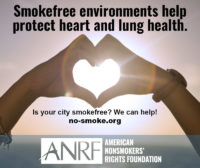 Interestingly, older methods of building support for a smokefree ordinance like generating a massive number of letters to the editor, emails to council members, and phone calls to decision-makers are making an impact. Yard signs are also making a comeback, and even informational mailings are seemingly being read since people are home reading their mail more often.
Interestingly, older methods of building support for a smokefree ordinance like generating a massive number of letters to the editor, emails to council members, and phone calls to decision-makers are making an impact. Yard signs are also making a comeback, and even informational mailings are seemingly being read since people are home reading their mail more often.
Some coalitions are instituting no-knock literature drops to bring information about secondhand smoke directly to the public. For rural or disenfranchised communities that may not have good or reliable internet access, old-school phone conference calls are being utilized for coalition meetings.
YOU GOT THIS!
Adapting, changing, and getting creative with your coalition goals is wise in these unpredictable days and times. Now more than ever before, it takes a full coalition and community-wide effort to reach your goals for smokefree policies since so many people and programs are stretched thin. Each support or member is vital and everyone needs to play a role to be most effective educating and organizing for smokefree initiatives and policies that protect the health and safety of all workers.
For more information and resources, contact the ANR Foundation at info@no-smoke.org or visit no-smoke.org for our Reopen Smokefree Tips.
May be reprinted with appropriate credit to the American Nonsmokers’ Rights Foundation.
© Copyright 2020 American Nonsmokers’ Rights Foundation. All rights reserved.

